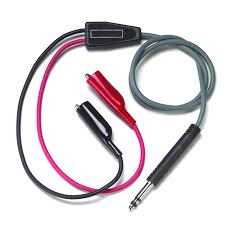Just some thoughts on this approach.
TRS jacks are made for audio applications. One needs the right sized minijack to alligators and you are set.

Putting better clips, i.e., BNC, shielded cables etc., will unlikely be meaningful unless you can output MHz from this in a quality worth maintaining its fidelity, which will require access direct to the PCB, in which case interesting problems can occur if it doesn't work out. So, alligators are good enough.
The output of amps to TRS jacks are typically 8 ohms, most electronics equipment is at least 50 ohms, so be aware the impedance mismatch. Also the output voltage was made to drive mini-earphones or a preamp input, not that required for projects, so beware overloading the output.
Insure the output is AC coupled, so no DC can inadvertently enter via the output jack. Phones are typically low power/low voltage logic, and may not take kindly to 5V.
If phone gets damaged by misadventure in electronics, a non-contract Galaxy S replacement is ~$500. If a phone is insured make sure the insurer can't find out its been tampered with. Lastly, consider the quality of the Android app output, is damaging it worth the risk? Or should one get a function generator kit for < $30, $50 assembled [ Elenco] ?

Some thought for safer experimenting, enjoy!

I've installed FuncGen on my Android based phone (Samsung Galaxy S). What's the best way to get from the 1/8" TRS female (phones jack) to what I'd need (probes and/or clips) for circuit testing? Can I use a TRS male and solder both the Tip and Ring to the positive probe/clip and the sleeve to the ground?
Your help is much appreciated.
Cheers!
Mitchell